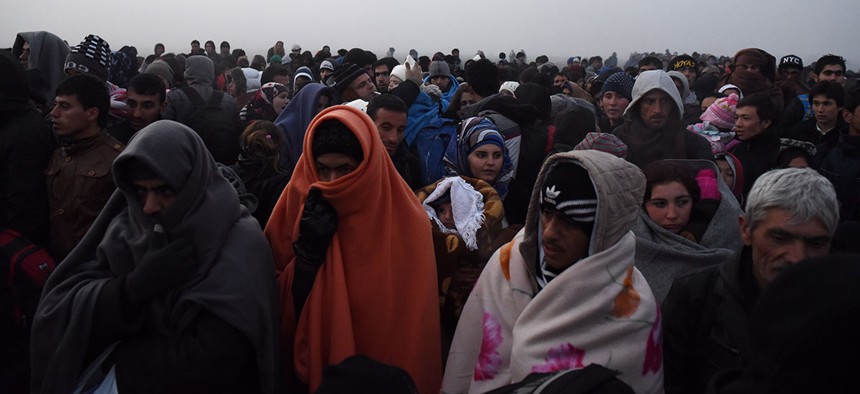There are over 60 million displaced people around the world right now, including four million Syrians who have fled conflict and violence in their home country. The world is witnessing the largest refugee crisis since World War II.
For many of these refugees, finding safety and opportunity to rebuild their lives somewhere outside their home country is the only hope they have.
Since the Refugee Act of 1980, the United States has saved the lives of over three million refugees. However, at a time when the U.S. needs to show humanitarian leadership, some state governments and Congressional leaders are calling for a stop to the program, or limits in refugees from particularly countries or religions.
This would be a grave moral mistake. A hallmark of the U.S. refugee program is that it accepts refugees based on vulnerability and does not discriminate against any particular religion. It should remain that way.
Instead of allowing ourselves to be consumed by fear and misinformation, we must ground our response in compassion, armed with the facts about how refugee resettlement works in the U.S. Here is a detailed rundown of the process:
Who are the refugees coming to the US?
Every year, the President, in consultation with Congress, determines how many refugees should come into the U.S. In FY16, the ceiling is 85,000, up from 70,000 last year.
They come from diverse areas. The largest groups of refugees the U.S. received last year came from Iraq, Burma, Somalia and Bhutan. In the past five years, the U.S. has received less than 2,500 Syrian refugees, most of whom were women and children.
How does the vetting process work?
The vetting process for each refugee is highly rigorous, and usually takes two to three years to complete.
Refugees first have to prove that they are actually refugee by registering and being accepted by the United Nations’s refugee agency overseas. This means they have to have a well-founded fear of persecution based on five specific grounds: nationality, race, religion, political opinion or membership in a particular social group.
A small number of those registered—the most vulnerable cases—are referred to the U.S to be considered for resettlement. Only those who cannot return home or locally integrate in the country of asylum are referred for resettlement.
The US State Department’s Resettlement Support Center then collects biographical information and personal data for security clearance. The Department of Homeland Security, the FBI, the Department of Defense and multiple intelligence agencies then work together to carry outmultiple security screenings based on biometric and biographic data, photographs, and other background information over a period that lasts on average 18 to 24 months. Any refugee who is deemed to pose a threat to our national security is denied.
Syrian refugees also undergo “enhanced reviews” in which specially trained officers examine each case biography for accuracy and authenticity. In addition to these security checks, every single refugee is interviewed face-to-face by a Department of Homeland Security official and must undergo a medical screening.
How are refugees resettled in the US?
Once refugees are conditionally approved for resettlement, they go through cultural orientation and pay for their own plane tickets to come to the U.S.
World Relief, which is one of nine refugee resettlement agencies in the U.S, partners with local communities to help refugees get on their feet upon their arrival. This includes, partnering with local businesses and churches to assist with living arrangements, providing English classes, aiding in their job search, and much more. Refugees have been welcomed all over the country where they have become integrated, and become tax-paying, contributing members of many communities.
This is not to say that we shouldn’t carefully vet refugees, but let’s get the facts first before making generalizations and shutting down a program that has literally saved thousands of lives.To turn our backs on refugees now would betray our nation’s core values to provide refuge for the persecuted and affirm the very message those who perpetrate terrorism are trying to send.
Jenny Yang is the vice president of advocacy and policy at World Relief.
NEXT STORY: Going Beyond Jack of All Trades







